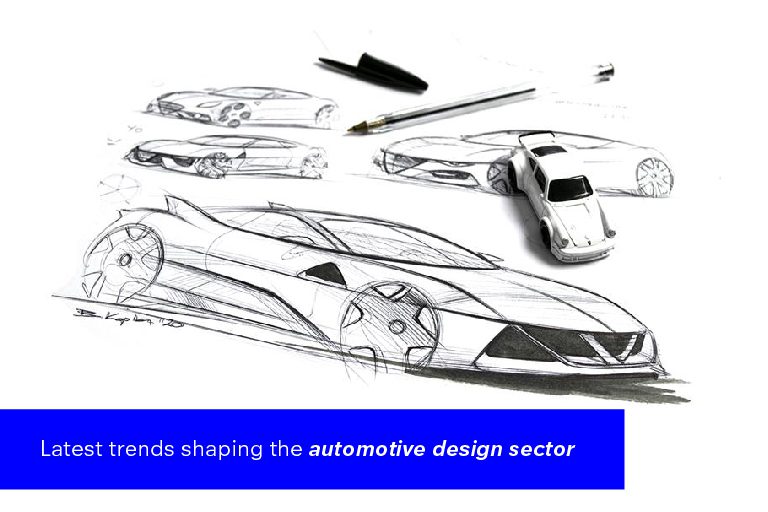Adapting and innovating with changing times is key to success in our digitally savvy world. There may be many other factors that influence the automobile sector, but modern technological advancements are at the forefront. In the midst of its technological revolution, the automobile sector is converging new digital technologies with traditional vehicle design. We can see the impact in design for interiors and exteriors, mobility, and function, and more. These technological advancements are offering consumers more features that bring in added convenience elevating customer experiences.
Let’s take a look at some brands that are already making use of modern tech to elevate user experiences in the automobile sector:
A. Tata Motors
The Indian giant and market leader for Electric Vehicles (EVs) uses Microsoft Azure Intelligent Cloud for advanced navigation, predictive maintenance, remote monitoring features, and AI innovation for its connected cars.
B. We are today closer than ever to flying with Alex Aeronautics working its first model that can drive on the road and fly as well. The brand has opened bookings on its test model.
C. BMWs colour-changing car
In a ground-breaking innovation, BMW launched iX Flow which is known to be a colour-changing car. This is only possible with the use of electronic ink technology. The car’s exteriors can be turned into a variety of patterns with the help of this technology.
D. Tesla
Globally known for its groundbreaking innovation in EVs, Tesla uses Full Self-Driving features that is one of the most advanced driver-assisted systems available to consumers today.
Also read: AI’s influence in UX Design: Redefining UX design
These examples reflect how the times have changed for the automobile sector and help us shine a light on some of the trends shaping the sector over the past few years:
Connectivity: Internet of Things (IoT)
Our digital era calls for a broader connectivity of our devices. In automation design communication, and connectivity are becoming focal points. Connecting elements in a vehicle has become more essential than ever, an indispensable feature of modern vehicles. This includes aspects like making Netflix a regular offering onboard flights and having a direct Spotify/ Apple Music connection with your ride. Tesla can used as a great example of connectivity.
By making use of IoT, vehicles will become more connected and wireless. Offering users, a simple and convenient multimedia experience using on-demand or streaming features. The vehicles will be able to share internet access and data with devices placed within the car or outside.
What else?
As a vehicle becomes more centrally connected it can also send data for remote diagnostics. Experts can look at the vehicle’s health, get directions, warn of the car’s health issues, and can help to prevent breakdowns. Predictive intelligence and maintenance technology will aid in maintaining cars in their utmost health and prevent accidents due to lack of maintenance.
Also read: Sustainable branding: Building green identities for ethical businesses
Digital purchase of vehicles
Another trend shaping the automobile sector is how people have traditionally purchased their vehicles. What pushed this change was COVID-19 which has become a leading trend. While makers in American and European market segments are already selling online, there is a new market growing across the globe.
How does this impact designers?
Manufacturers now need to make it their priority to showcase their vehicles in a digitally appealing manner. Highlighting features of the vehicle, making apt drawings 2D or 3D for the website. Producing animation and live video of the vehicle capabilities will become an increasingly essential part of automobile designers’ profiles. They will need to bring out the design process to build a storyline for digital channels.
A fine example of online purchase is Tesla – a brand that sells online its different models offering set customization to its buyers to choose from. Once you have completed the order, your Tesla will be delivered to your doorstep within the said delivery timelines.
Online purchase allows users to pick their choice of colors, interior variations, exterior features and variations, and seat variations (4/5/6/7-seater and so on). All these require a designer to offer the viewers a realistic 3D design that reflects the true size and nature of the vehicle.
Also read: Shaping the future of design excellence: Design Ethos at Strate School of Design
Self-driving vehicles
We have all heard news of many tests that are being run across nations, especially in the US, for self-driven vehicles. Global brands like – Uber and Google are both known to be testing their self-driven systems. One thing to be noted is that the technology for self-driven cars is still under perfection, however, we must acknowledge how far we have come.
When we think of design, self-driven vehicles offer designers room to work with the interior more and change the traditional way of seating to more comfort, safety, and convenience of connectivity. They can focus on the core needs of the travellers in the car when there is no driver. Designers get to work with various technologies like IoT, AI, and AR/MR that enhance user journeys and make their journeys relaxing, memorable, and safe.
Tesla’s electric Semi Truck is known to have autopilot features that help to facilitate the driving process. Brands like Walmart and Pepsi have gone on record to confirm they have ordered Tesla Semi trucks for their commercial needs.
Also read: Graphic Design trends dominating 2023 so far
EV – Electric Vehicles
A growing trend and one that will continue to grow is the production of EVs. This trend is picked up by many leading global vehicle brands that are offering hybrid models. The global pioneer Tesla is known for its cut-above-the-rest models in the EV segment that offer one-of-a-kind car features.
As a designer, in EVs, the focus shifts toward ensuring a user’s connectivity, accessibility, and overall design features. Tesla runs with more masculine feature designs that are futuristic in nature with a range of variations that a user can choose from before making the final purchase online. Another example is of the US-based Startup Lordstown Motors Corps which has designed an all-electric pick-up truck – Endurance TM. It is a sturdy work vehicle that comes with fewer moving parts when compared to traditional ones, promoting easy-to-maintain vehicles.
Mobility as a service
With global warming considerations, shared mobility has become a strong force to reckon with. Many new start-ups are working on Maas – Mobility as a Service. For busy cities, this is a great alternative helping to prevent pollution and traffic. Designers are focusing on building a communal interior design for this vehicle that offers ease of traveling along with all the comforts of a personal car.
These trends are here to last, and designers must embrace change. They should foster creative learning in their practices, challenge the traditional ways of working, and incorporate technological advancements in our digital landscape.
Also read: The future of eco-friendly innovation: Sustainable Product Design



Want to Become a Designer ?
Strate is a unique design school that nurtures your talents as a designer by offering state-of-the art designing courses in Bangalore.
Join Strate